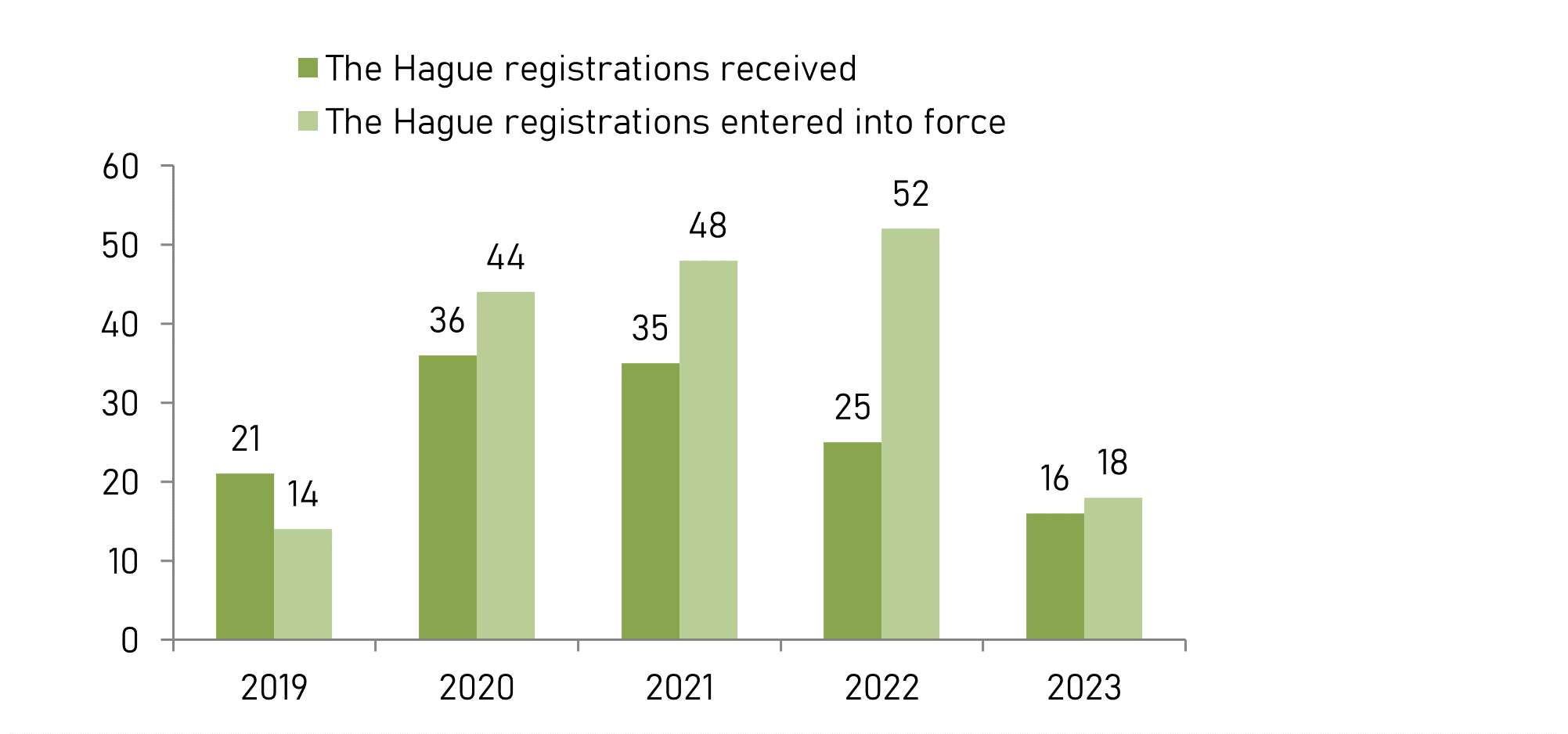In Estonia, the protection of industrial designs can be applied for on the grounds of the Industrial Designs Protection Act that entered into force on 11 January 1998. From 1 May 2004, legal acts concerning Community designs, including the Council Regulation 6/2002/EC of 12 December 2001 on legal protection of the Community Designs, are also valid in Estonia.
Pursuant to the Regulation, all industrial designs disclosed to public in the territory of the European Union automatically have a 3-year protection against copying as well as other existing possibilities for registration.
Estonia acceded to the Geneva Act of the Hague Agreement Concerning the International Registration of Industrial Designs on 23 December 2003. Common Regulations of the Geneva Act of the Hague Agreement Concerning the Deposit of Industrial Design entered into force on 1 April 2004. To protect an industrial design via the Hague system, an application in English or French should be filed with the International Bureau of WIPO in Geneva, designating the countries where protection is wanted.
In Estonia, industrial designs are registered by formal registration system. The Estonian Patent Office does not examine the industrial design as to its novelty, individual character, industrial applicability or the right of a person to file the application.
In 2023, the Estonian Patent Office received 17 industrial design registration applications, which is almost half less than last year, 2022 (38 applications). All people looking to register an industrial design were from Estonia. The most applications were filed in the group „building units and construction elements“.

However, the filing of applications directly with the European Union Intellectual Property Office has increased. Applicants of Estonian origin filed 172 applications with the European Union Intellectual Property Office, a higher number than in 2022 (162 applications). Applications protected this way are subject to legal protection throughout the territory of the European Union, including in Estonia.
As shown above, Estonian applicants have filed fewer national applications for registration of industrial designs in 2023 compared to the previous year, but as more applications were filed with the European Union Intellectual Property Office, the number of applications filed in summary remains stable – the number of applications was 189 in both 2022 and 2023.
The number of applications for international registration of industrial designs filed under the Hague Agreement has decreased furthermore. In 2023, 16 applications were filed this way, which is fewer than in 2022 (25) and almost half less than in 2021 (35) and far behind the 2017 record (88 applications). The highest number of applications were filed from the UK (4 applications) and France (3 applications). Estonian applicants did not submit any applications under the Hague Agreement in 2023. The most applications were filed in the group „means of transport or hoisting“ (4 applications).

By the end of 2023, there were 7 national applications and 10 international applications pending. On 31 December 2023 there were in total 317 industrial designs in the Estonian register of industrial designs (356 in 2022) and 445 international industrial design registrations with legal protection in Estonia (450 in 2022). This can be explained by the fact that the duration of design protection is not indefinite (as it is in the case of trade marks) and, secondly, there is no need to extend the protection after the first or second protection period (one period of 5 years).
Those who are interested to know more about which industrial designs have been registered in Estonia, which are valid and which are not, can use the database of industrial designs on the web site of the Patent Office.
In accordance with the previously mentioned statistics, the decrease in the number of national applications in 2023 has been significant. One of the reasons may be that the Estonian applicant wishes to have wider protection for his design than only the territory of Estonia, which is why the registration application is filed straight with the European Union Intellectual Property Office – this way, protection is obtained at the same time in Estonia and in all other member states of the European Union. However, one cannot ignore the fact that potential applicants’ lack of knowledge in this area most likely contributes to the lack of protection for industrial designs. We are still pleased to note that there may be more interest in the protection of industrial designs than the numbers indicate – there are more people requesting advice by phone and e-mail, though we would prefer to see even more of them.

In 2022 he European Commission prepared proposals to reform the EU design law that is already 20 years old. The text for the recast directive and the amended regulation, which is expected to enter into force in the first half of 2024, was finalised in 2023. Member states shall have up to 36 months from the date of entry into force to transpose the directive. The new rules will make the protection of industrial designs more modern and easier at both national and EU level. The major changes concern the concept of an industrial design and extend the possibilities of filing an industrial design for registration, also harmonise the rules for the revocation of a design registration in the Member States.
As a result, the coming years promise to bring many changes, and we hope that designers will be able to protect intellectual property more effectively than in the past. This can be done either at the Patent Office or to file an application directly with the European Union Intellectual Property Office.

